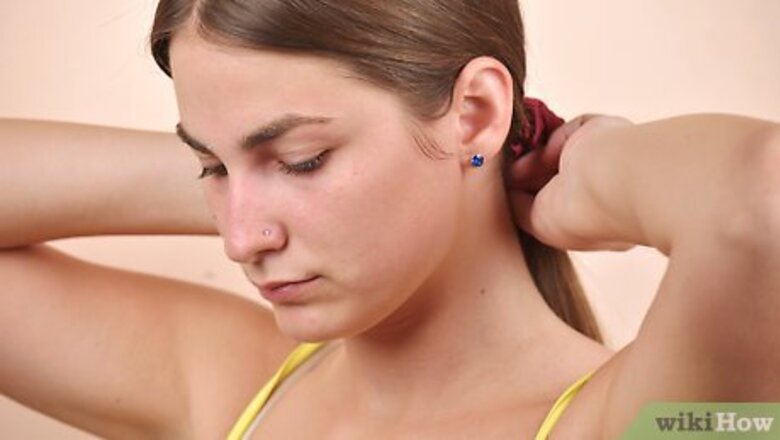
views
X
Trustworthy Source
Cleveland Clinic
Educational website from one of the world's leading hospitals
Go to source
However, you have to use the right kind of exfoliation for your skin type to get the best results and avoid irritation.[2]
X
Trustworthy Source
American Academy of Dermatology
Professional organization made of over 20,000 certified dermatologists
Go to source
It’s best to consult with a dermatologist about how to exfoliate your face. Depending on your needs, there are a number of products and medical procedures you can try.
Using an Exfoliating Scrub at Home

Pull your hair back. If you have long hair, pull all of it away from your face and secure it with a hair tie. If you have bangs, you may need a headband or pins to hold them back away from your face as well. Some exfoliating products are gritty or gunky, so it’s best to avoid getting them in your hair!
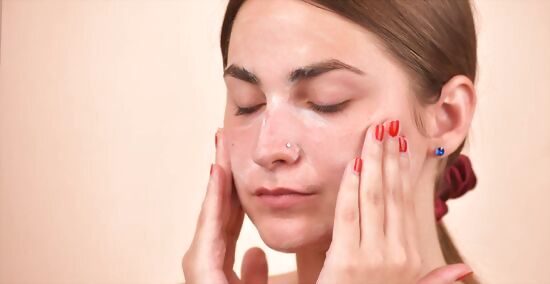
Cleanse your face with your usual cleanser. You’ll get the best results if you clean your skin before exfoliating it. Splash on a little lukewarm water and apply your favorite cleanser with your fingertips, then rinse it away with more lukewarm water. To prevent irritation, choose a gentle cleanser that’s free of harsh ingredients like alcohol, perfumes, or dyes. Don’t use hot water, since it can irritate and dry out your skin.
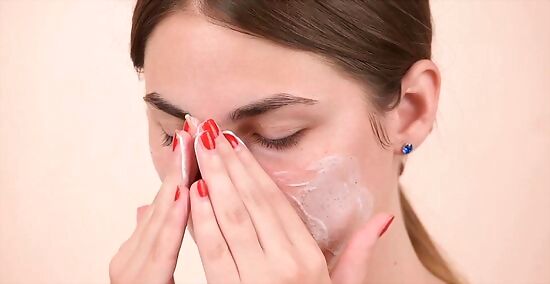
Apply your exfoliant in circular motions with your fingertips. Whatever exfoliant you’re using, have it ready to go. Maybe you decided to make a scrub at home, or maybe you’ve purchased a product at the store. Either way, apply the exfoliating paste to your clean, wet skin. Use your fingertips to gently rub the paste in circular motions over your entire face for about 30 seconds. Using your fingertips is the safest way to apply a scrub without irritating your skin. If you use a sponge, brush, or washcloth, keep your strokes very short and light. Don’t rub the exfoliant into your skin! Don’t exfoliate if you have open cuts, wounds, a sunburn, or active cold sores.

Rinse the scrub off of your face with lukewarm water. Wash off all the exfoliating paste with warm, not hot, water. Make sure you’ve removed all of the scrub, otherwise your face will be sticky or grainy from the leftover scrub. You can use a clean, dry towel to gently blot away excess water, but leave your face a little damp to make your moisturizer more effective.

Smooth on a moisturizer with sunscreen. Right after you’re done exfoliating, while your face is still damp, apply a bit of moisturizer. This will help prevent your skin from drying out, which can cause irritation, breakouts, or peeling. Choose a moisturizer that’s non-comedogenic (won’t clog your pores) and has an SPF (sun protection factor) of at least 30 to prevent sun damage. Your skin may be extra sensitive after exfoliating. Choose a gentle moisturizer that’s free of harsh ingredients, like alcohol, dyes, perfumes, or parabens.
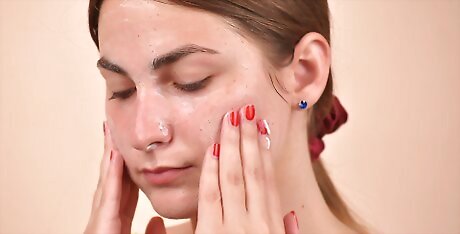
Experiment to find the ideal exfoliation schedule. Some skin care specialists advise exfoliating as often as once a day. However, if your skin is dry, sensitive, or easily irritated—or if you’re using particularly strong exfoliants—you may need to do it less often. If you’re not sure how often to exfoliate, ask your doctor or dermatologist. Exfoliating too often or too aggressively can be counter-productive, leaving you with damaged, rough, or inflamed skin.
Choosing Exfoliating Products

Examine your skin for oil or dryness to determine your skin type. Everyone’s skin is different, so it’s important to get the best exfoliant for your needs. Look at your skin closely to determine whether you have oily skin, normal skin, or dry skin before buying an exfoliating product. Dry skin is often flaky or itchy, while oily skin can feel greasy or look shiny. If your skin tends to have a greasy sheen or is prone to breakouts, especially in the “T-zone” around your nose, forehead, cheeks, and chin, then you probably have oily skin. If your skin is dry, flaky, or prone to redness and itching, you may have dry or sensitive skin. Many people have a combination of the 2 types in different areas, in which case you may need to use different products on different parts of your face.

Choose products with gentle acids or benzoyl peroxide if your skin is oily or acne-prone. When you buy an exfoliant, check the label and look at the active ingredients to make sure it’s formulated for your skin type. If you have oily or acne-prone skin, choose a product that contains either benzoyl peroxide or salicylic acid. These ingredients can help to improve and prevent breakouts. You can also apply an alpha-hydroxy-acid or lactic acid cleanser, which helps remove dead skin cells. Use a product with retinoic acid to balance out skin tone and reduce fine lines and wrinkles. If you are allergic to aspirin, you should not use any product containing salicylic acid.
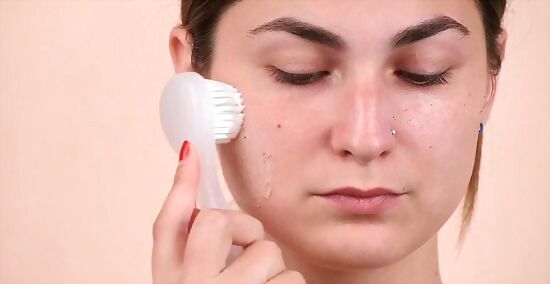
Try an electric exfoliating brush for thick, oily skin. Brands like Clarisonic, Foreo, and Anisa have developed tools that can be used to remove the outer layer of dead or uneven skin from your face. These brushes use sonic frequency to remove dirt and debris from your face without irritating your skin. Though not as effective as a professional microdermabrasion treatment, these tools are much less expensive. They’re a great alternative to microdermabrasion if you have uneven skin that’s not super dry or sensitive. It is important to clean your brush once a week since it comes into contact with the dirt, bacteria, and oils on your face whenever you use it. Check your owner’s manual for instructions on how to clean your brush properly.

Opt for gentle scrubs if you have sensitive or dry skin. If you have sensitive skin, you’ll need to give it more delicate TLC to prevent irritation. Look for products that are labeled as suitable for sensitive skin. Choose a gentle scrub with mild, anti-inflammatory ingredients, such as colloidal oatmeal, instead of harsh chemical exfoliants. These products are good for dry or easily irritated skin, too. Avoid scrubs with plastic microbeads, which are harmful to the environment.
Trying Professional Services
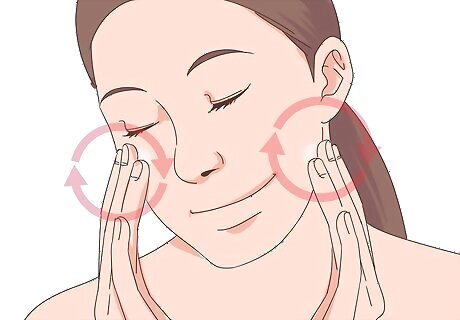
Treat yourself to a spa facial. Make exfoliating your face part of a relaxing spa day. Spas offer many dermatological services during facials, from exfoliation to deep cleansing treatments. Every once in a while, enjoy a relaxing day of pampering. While you’re there, treat yourself to a massage, too! During a typical spa facial, your aesthetician will cleanse, massage, and moisturize your skin. They may also apply masks or gentle exfoliating treatments. If you have any skin concerns, such as unusually dry or sensitive skin, talk to a dermatologist about which spa treatments may be safe and beneficial for you. If you want to get a more intensive exfoliating treatment, such as a chemical peel, consult your dermatologist first. It’s usually best to get those kinds of treatments in a dermatologist’s office.

Get professional microdermabrasion for deeper exfoliation. Also referred to as mechanical exfoliation or micro-resurfacing, microdermabrasion uses a mechanical suction tube with an exfoliating tip to get rid of dead or dry layers of skin. It cleans out pores and rejuvenates skin, though the process does need to be repeated every few weeks to maintain the positive effects. Talk to your dermatologist about whether this treatment is right for you. Microdermabrasion is a non-invasive treatment that is performed in-office by a dermatologist. On average, a microdermabrasion procedure costs around $136 in the U.S. Depending on your needs and the condition of your skin, you might need treatments anywhere from once a week to once a month. Don’t do microdermabrasion if you scar easily or have used the medicine isotretinoin within the past 6 months. If you are on any type of acne medication, ask your dermatologist before getting any microdermabrasion treatments.
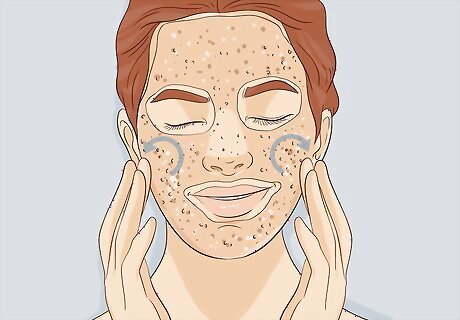
Try a chemical peel as an alternative to microdermabrasion. If you do not have dry or sensitive skin, you may be a candidate for getting a chemical peel from a dermatologist every 4-6 weeks. Chemical peel solutions contain acids that help to remove dead skin, speed cell regeneration, or both. The top layer of your skin will be red and irritated for a few days after a chemical peel, and then it will begin to heal itself and generate fresh, smooth skin. On average, a chemical peel costs around $644 in the U.S. However, the price can vary a great deal depending on factors like the type of peel you’re getting and the doctor’s experience level. Chemical peels can be done at light, medium, or deep levels depending on your desired results. Deeper peels take longer to heal. Your skin will probably look red for a little while after a chemical peel. Other less common risks include scarring, changes in skin color, and infection. The carbolic acid in deep chemical peels can also cause heart, kidney, or liver damage, so talk to your doctor before trying this treatment. EXPERT TIP Amber Crain Amber Crain wikiHow Staff Writer Amber Crain has been a member of wikiHow’s writing staff for the last six years. She graduated from the University of Houston where she majored in Classical Studies and minored in Painting. Before coming to wikiHow, she worked in a variety of industries including marketing, education, and music journalism. She's been a radio DJ for 10+ years and currently DJs a biweekly music program on the award-winning internet radio station DKFM. Her work at wikiHow supports her lifelong passion for learning and her belief that knowledge belongs to anyone who desires to seek it. Amber Crain Amber Crain wikiHow Staff Writer "If you're looking for an affordable chemical peel that you can do at home, I recommend The Ordinary AHA + BHA Peeling Solution. This solution is strong, so avoid leaving it on your skin for more than 10 minutes. I started with 5 minutes since my skin is pretty sensitive, and slowly worked up to 10 minutes after several applications. I use this peel every 2 weeks and my skin looks so smooth and bright afterward."
















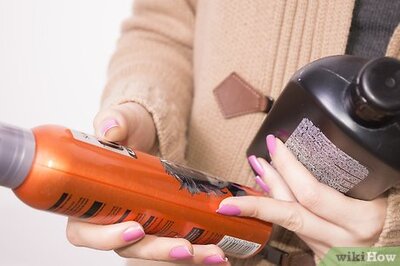


Comments
0 comment